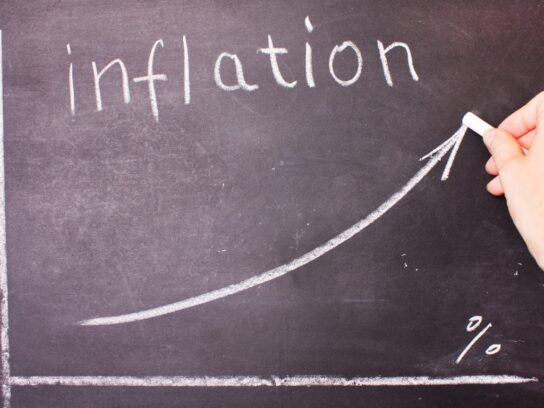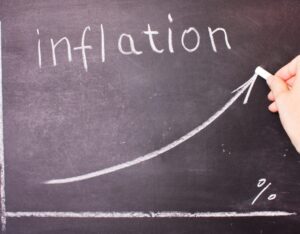
 The 2017 passage of the Tax Cuts and Jobs Act added accommodative fiscal policy to the already expansionary monetary policy instituted by the Federal Reserve (the Fed). Such dual economic stimulus has not been in effect for most of the past four decades. Outside of two sharp economic and stock market crashes, these recent decades have witnessed the triumvirate of 1) economic growth, 2) declining interest rates, and 3) low inflation. These factors, for the most part, have proven to be good for both stocks and bonds.
The 2017 passage of the Tax Cuts and Jobs Act added accommodative fiscal policy to the already expansionary monetary policy instituted by the Federal Reserve (the Fed). Such dual economic stimulus has not been in effect for most of the past four decades. Outside of two sharp economic and stock market crashes, these recent decades have witnessed the triumvirate of 1) economic growth, 2) declining interest rates, and 3) low inflation. These factors, for the most part, have proven to be good for both stocks and bonds.
Congress rarely passes accommodative fiscal policy when the economy is expanding, as it was in late 2017. Rather, we typically see strong fiscal stimulus during a period of economic contraction. Accommodative monetary policy and stimulative tax cuts are designed to spur economic growth, which is inherently inflationary. Fortunately, there are currently only a few signs of meaningful inflation but that could change.
As 2020 begins, there are many reasons to be optimistic on stocks (e.g., low interest rates, favorable tax structure, relaxed regulation, low unemployment, strong consumer spending, low energy prices, and other reasons). And many stock market analysts are bullish, myself among them. With the Fed in accommodative mode and fiscal and regulatory relief supporting the markets, stocks are operating in a favorable environment.
However, the Fed historically has been notoriously inaccurate with its timing, and recent and continued easing may prove unwise. Furthermore, if the economy continues to do well, investors should begin to be concerned about potentially higher inflation later this year or in 2021. Of course, the U.S. economy could continue to thread the needle and experience continued economic growth with only nominal inflation. But eventually, we will likely pay the price for this dual stimulus—especially with the recently reached trade deals, which are likely to further benefit the economy and stimulate growth.
In recent decades, we have been able to accomplish growth with low inflation for a variety of reasons, including the expanded use of technology in all phases of economic activity. This has led to increased productivity without a corresponding increase in costs. While technology was a major factor in lowering inflation, globalization also played a role in lowering costs.
Globalization is designed to move production to more efficient regions of the world, which in turn lowers costs and ultimately lowers consumer prices. However, a side effect of globalization was a decline in wages for U.S. workers. While segments of our economy benefitted, in recent years we’ve heard more from the millions of disaffected Americans who did not benefit from globalization and were in fact hurt by lower wages.
This decline in wages was especially unfortunate for those in the lower and middle income brackets, and it contributed to unexpected negative socio-economic impacts for our country. Wage growth stagnated at levels near or below inflation until 2019, when, due to the robust labor market and other factors, we once again had wage growth of over 3%—which was above inflation.
With the recent USMCA Trade Agreement and the Phase I China Trade Agreement looking likely, globalization is under further scrutiny, and the expectations are that the trade gap may narrow. This should shift production to the U.S. and eventually raise both costs and inflation.
If this occurs, how much longer will the Fed and other Central Banks be able to continue their accommodative monetary positions? In late 2018 in the U.S., when the Fed Chairman talked a tough interest-rate game, we saw stocks (e.g., the S&P 500) quickly plunge almost 20%. And despite the nascent indications of firming in the Eurozone economy, monetary policy remains very accommodative (as it has been for the past 11 plus years). So it is unknown at this point how the Fed and other Central Banks would effectively manage a return of inflation.
If the global economy continues to be robust, Central Bank effectiveness in managing potential inflation will likely be an important development for stock prices in the coming years. There are many factors contributing to economic growth and potential inflation, notably expansive monetary policy, accommodative fiscal policy, and the reduction in globalization. Add any price impact of tariffs, upward wage pressure from a low 3.5% unemployment rate, and increased legislation raising the minimum wage, and you have an extraordinary mix of inflationary pressures. Furthermore, if the U.S. continues its strong growth (e.g., GDP in excess of 2.5%) and the global economy picks up, a return of inflation becomes even more likely. Should that happen, if investors react out of fear, or if program trading takes hold, look for wild, dramatic swings in asset values, with both the bond and stock markets feeling the heat.



Comments are closed.